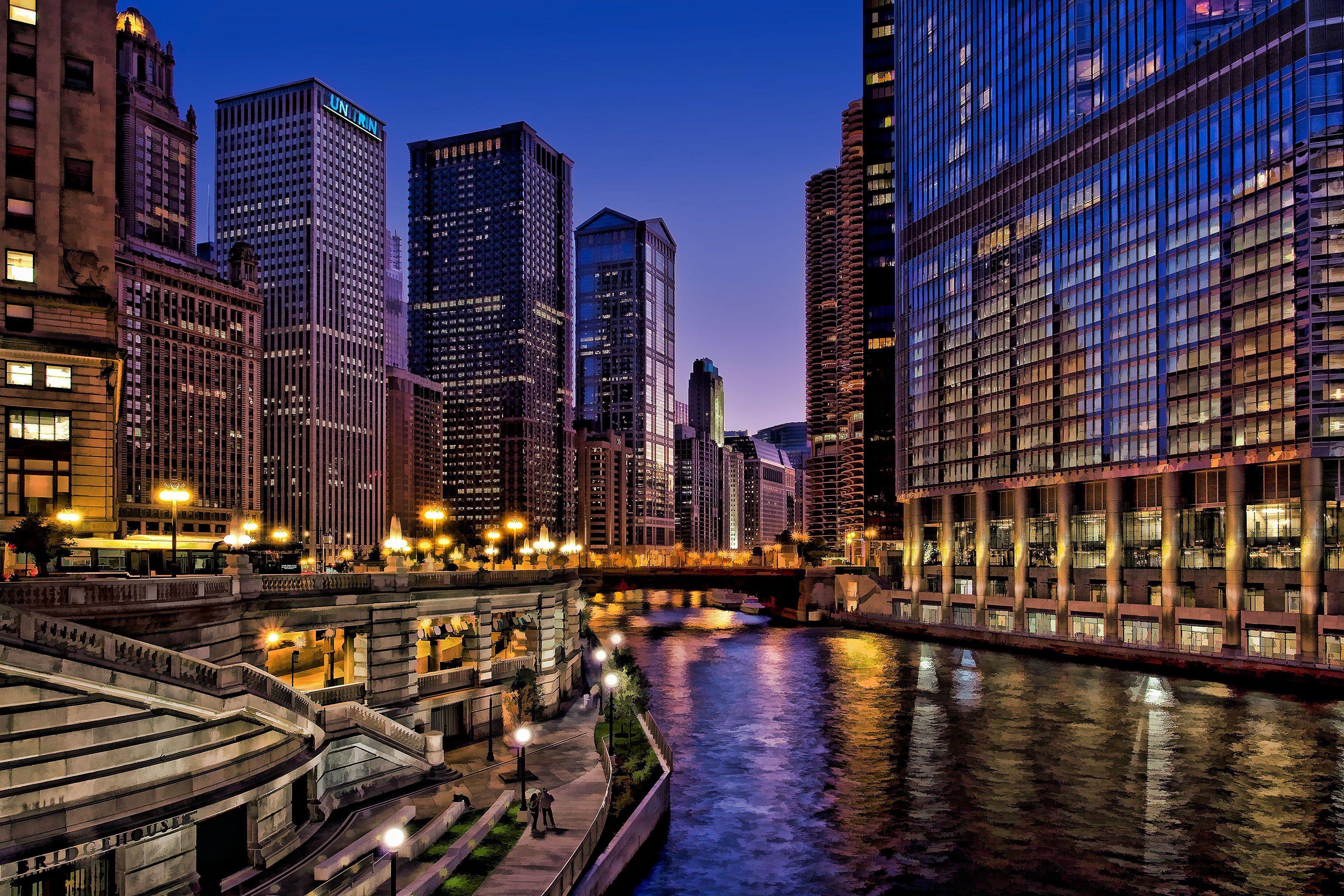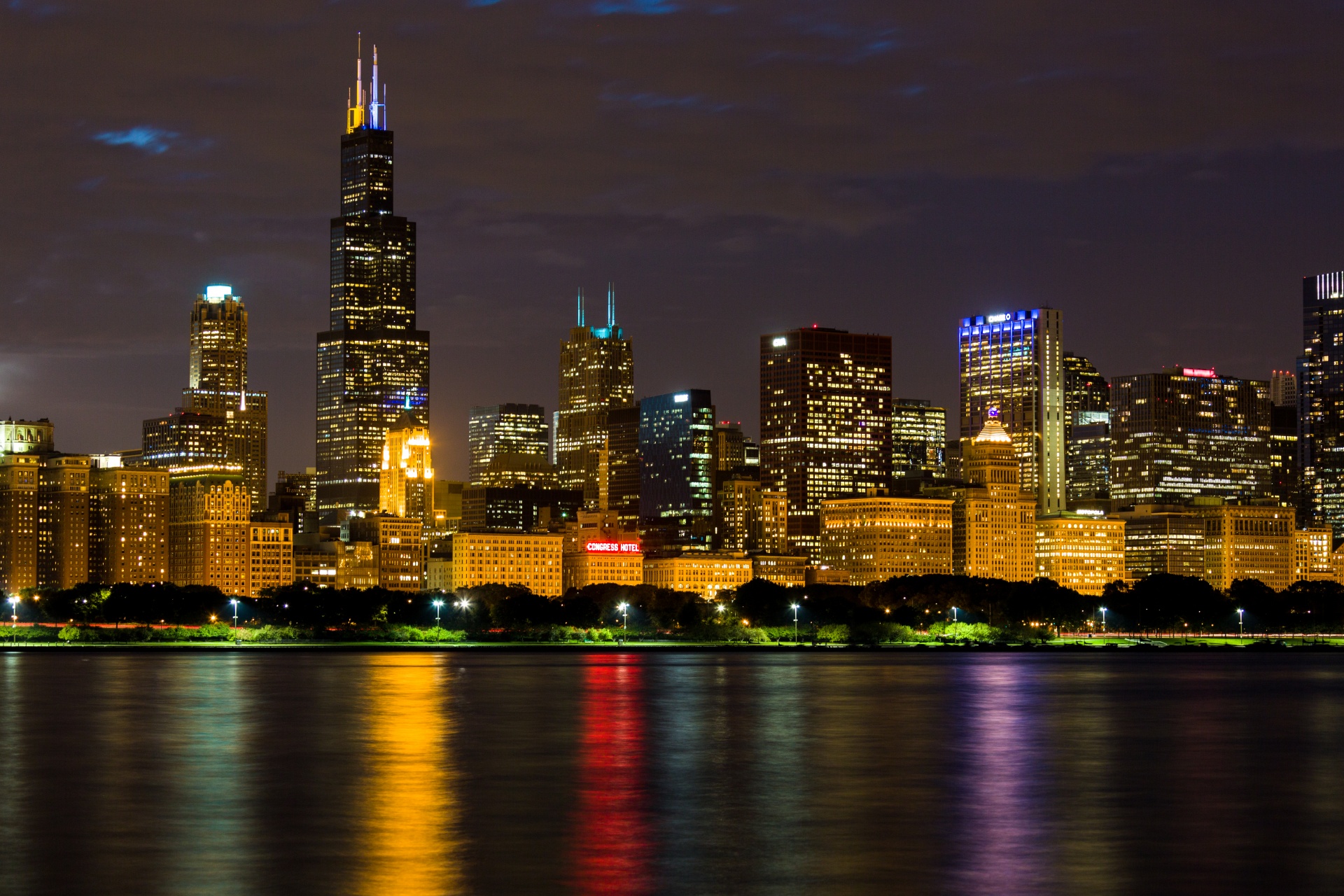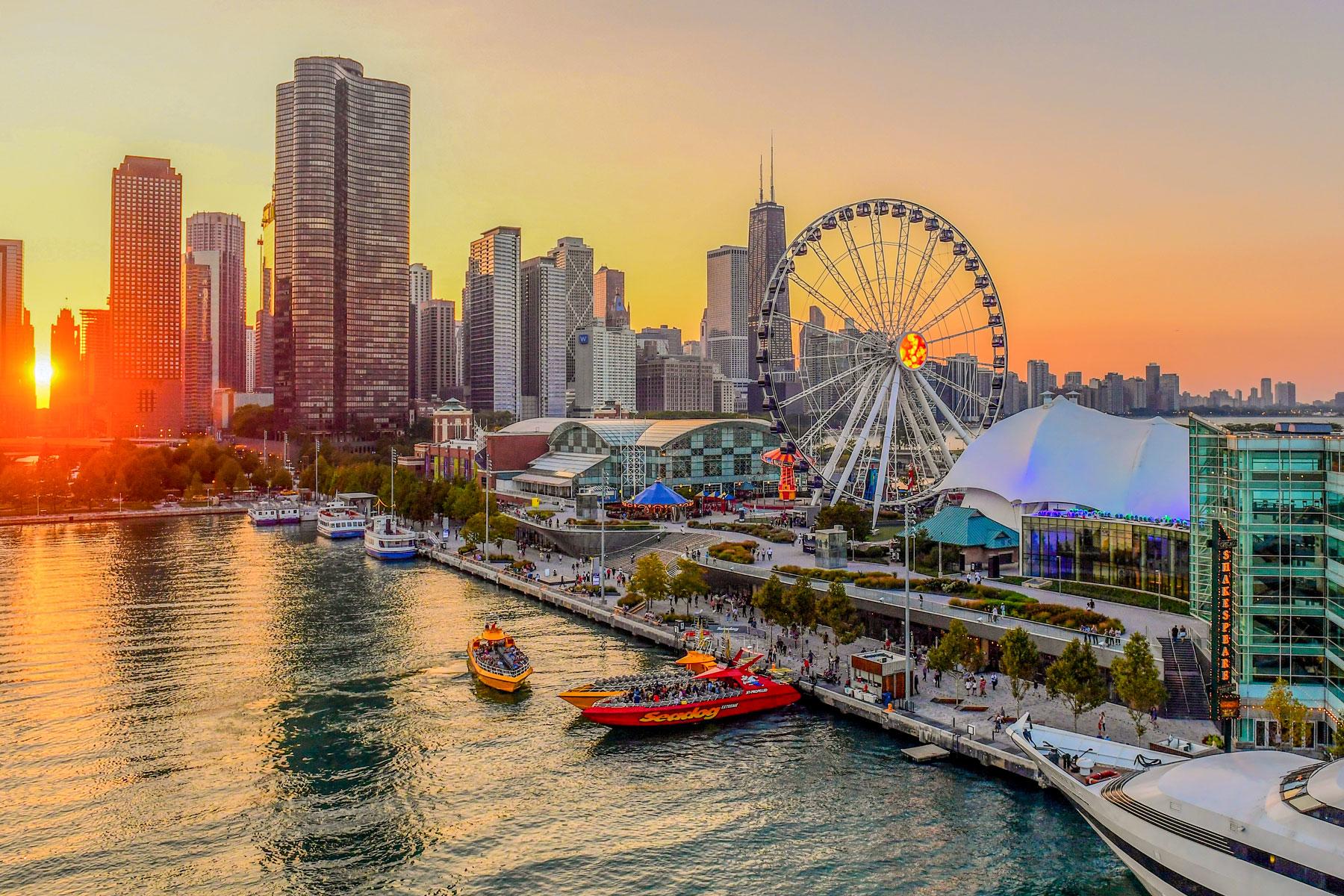Chicago, a city renowned for its stunning architecture, vibrant cultural scene, and its remarkable achievement of being celebrated for its 8th year as the best big city in the U.S., truly offers an unparalleled urban experience. As the most populous city in Illinois and the third largest in the United States with a population nearing three million, it’s a bustling metropolis that harmoniously blends towering skyscrapers with tranquil beaches, living up to its motto, "a city in a garden." However, beneath this picturesque facade lies a significant challenge that residents and visitors alike must contend with: Chicago traffic.
Whether you're a lifelong Chicagoan or planning the perfect Chicago trip to explore its iconic attractions and hidden gems, understanding the intricacies of the city's roadways is paramount. From the daily commuter grind to unexpected disruptions, navigating Chicago's extensive network of expressways and local streets requires patience, foresight, and access to reliable information. This comprehensive guide delves deep into the causes, impacts, and solutions surrounding Chicago traffic, offering essential insights to help you conquer the gridlock and make your journey through the Windy City as smooth as possible.
Table of Contents
- The Pulse of the City: Understanding Chicago's Unique Traffic Landscape
- The Daily Grind: Common Causes of Chicago Traffic Congestion
- Navigating the Maze: Key Expressways and Bottlenecks
- Safety on the Streets: Accidents and Their Ramifications
- Technology and Enforcement: Speed Cameras and Traffic Updates
- The City's Response: Initiatives to Mitigate Traffic Woes
- Beyond the Wheel: Alternatives to Driving in Chicago
- Essential Tips for Conquering Chicago Traffic
The Pulse of the City: Understanding Chicago's Unique Traffic Landscape
Chicago, the seat of Cook County in northeastern Illinois, is not just a major metropolitan area; it's a critical economic and cultural hub for the entire Midwest. Its strategic location on Lake Michigan, coupled with its robust rail and air transport networks, makes it a magnet for commerce, tourism, and a vast workforce. This dynamism, while a testament to the city's success, inherently contributes to the complexity of Chicago traffic. With a population of nearly three million within the city limits and an even larger metropolitan area, the sheer volume of people moving through its arteries daily is staggering. The city's urban planning, characterized by its grid system, offers a certain predictability, yet the constant flow of vehicles, pedestrians, and cyclists creates a delicate balance. As a "harmonious blend of opposites," Chicago's bustling big-city energy often clashes with the desire for smooth, efficient movement. The very features that make Chicago attractive – its vibrant downtown Loop, its sprawling neighborhoods, and its connectivity to the suburbs – are also the primary drivers of its traffic challenges. Understanding this fundamental tension is the first step in comprehending why Chicago traffic can be so demanding.The Daily Grind: Common Causes of Chicago Traffic Congestion
Chicago traffic isn't a singular phenomenon; it's a complex interplay of various factors, both predictable and unforeseen. From the daily rhythm of work to the whims of Mother Nature, several elements consistently contribute to congestion on the city's roads.Commuter Rush and Peak Hours
Like any major urban center, Chicago experiences significant peak-hour congestion during morning and evening commutes. Thousands of vehicles pour into the downtown Loop and surrounding business districts each weekday, creating dense traffic on all major expressways and arterial roads. The inbound lanes of the Eisenhower, Edens, and Kennedy expressways become particularly notorious during these times, as commuters from the vast suburban sprawl converge on the city center. This predictable surge in vehicle volume is the baseline for Chicago traffic, setting the stage for additional disruptions.Infrastructure Challenges and Roadwork
Maintaining a vast network of roads, bridges, and tunnels in a city as old and large as Chicago is a continuous, monumental task. Infrastructure projects, while essential for long-term efficiency and safety, inevitably lead to short-term disruptions. For instance, CDOT (Chicago Department of Transportation) recently reported that the State Street Bridge over the Chicago River downtown closed to vehicle and foot traffic and is expected to remain closed for months for emergency repairs. Such closures, though necessary, divert significant volumes of traffic onto already strained alternative routes, causing widespread delays. Similarly, IDOT (Illinois Department of Transportation) projects, like the ongoing work on the Kennedy Expressway, can impact major routes to destinations like O'Hare, requiring drivers to stay on mainline Kennedy and not the express lanes, with the entire project expected to wrap up by a certain timeline. These ongoing maintenance and improvement efforts are a constant, though variable, source of Chicago traffic.Special Events, Protests, and Unexpected Disruptions
Chicago is a city that loves to celebrate, protest, and host major events. From Lollapalooza to the Chicago Marathon, and countless parades and festivals, these gatherings draw massive crowds and often necessitate significant road closures. Beyond planned events, spontaneous protests can also bring traffic to a halt. The "Data Kalimat" mentions a Chicago Loop protest that impacted downtown traffic for hours on a Tuesday evening following a Federal Plaza rally against ICE raids. Such events, while important for civic engagement and entertainment, underscore how easily Chicago traffic can be disrupted by factors beyond the typical rush hour.Weather's Unpredictable Impact
The Midwest is known for its dramatic weather shifts, and Chicago is no exception. Winter weather, in particular, poses a significant challenge for Chicago traffic. Icy conditions, heavy snowfall, and freezing rain can make roads treacherous, leading to numerous crashes and drastically slowing down commutes. ABC7 in Chicago frequently reports on these conditions, noting instances where "winter weather in the Chicago area has created icy conditions for traffic on roads across the area Thursday morning with several crashes reported." Beyond winter, heavy thunderstorms, strong winds, and even extreme heat can affect road surfaces, visibility, and driver behavior, adding another layer of unpredictability to the city's traffic patterns.Navigating the Maze: Key Expressways and Bottlenecks
Understanding the major arteries and their common choke points is crucial for anyone attempting to navigate Chicago traffic. The city's expressway system forms the backbone of its vehicular movement, and knowing their quirks can save considerable time and frustration. The **Eisenhower Expressway (I-290)** is a vital artery connecting the western suburbs to the Loop. It's notoriously congested, especially during peak hours. The "Data Kalimat" specifically mentions a crash that happened at about 5:13 a.m. between Central and Laramie on the inbound lanes of the Eisenhower, highlighting how even early morning incidents can severely impact traffic flow on this critical route. The **Edens Expressway (I-94/US 41)** serves the northern suburbs, feeding into the Kennedy Expressway. It's another high-volume corridor, prone to significant delays. A tragic incident mentioned in the data involved a fiery crash that shut down the inbound Edens Expressway, resulting in one person killed and another injured, with inbound lanes of traffic blocked at Touhy. Such severe incidents underscore the vulnerability of these expressways to complete shutdowns, causing ripple effects across the entire network. The **Kennedy Expressway (I-90/I-94)** is perhaps the most iconic and often the most challenging. It connects downtown to O'Hare International Airport and serves as a major north-south corridor. IDOT's ongoing projects on the Kennedy mean drivers going to O'Hare from downtown Chicago must stay on the mainline Kennedy and not the express lanes, a crucial detail for travelers. The interplay between local lanes, express lanes, and frequent construction zones makes the Kennedy a perpetual challenge for even the most seasoned Chicago drivers. These three expressways, along with the Dan Ryan (I-94 south) and Stevenson (I-55 southwest), form the core of Chicago's traffic landscape, each with its own set of daily challenges.Safety on the Streets: Accidents and Their Ramifications
Beyond the inconvenience of delays, Chicago traffic carries significant safety implications. Accidents are a stark reality on busy urban roads, and their impact extends far beyond the immediate scene. The "Data Kalimat" provides sobering examples: a woman killed in a serious crash in the south suburbs, as reported by police, and the aforementioned fiery crash on the inbound Edens Expressway. These incidents highlight the severe consequences of collisions, which can range from minor fender-benders to tragic fatalities. Every crash, regardless of its severity, has a ripple effect on traffic flow. Lanes are blocked, emergency services respond, and rubbernecking drivers further slow down movement. This creates secondary congestion, extending delays for miles. For instance, the crash on the inbound Eisenhower at 5:13 a.m. would have severely impacted early morning commuters, potentially causing missed flights or late arrivals to work. The constant vigilance required on Chicago's roads underscores the importance of defensive driving, adherence to speed limits, and avoiding distractions. Local news outlets like ABC7 play a vital role in keeping the public informed about these critical incidents, often providing real-time updates that help drivers avoid affected areas.Technology and Enforcement: Speed Cameras and Traffic Updates
In an effort to manage traffic flow, enhance safety, and enforce regulations, Chicago utilizes various technological tools and enforcement measures. Among these are speed cameras, which have been a subject of public discussion regarding their accuracy and effectiveness. The question, "How accurate are Chicago's speed cameras?" is a common one, reflecting public concern over fairness and precision. These cameras are strategically placed in areas deemed high-risk or near schools and parks, aiming to deter speeding and reduce accidents. While they serve as a revenue source for the city, their primary objective, according to city officials, is to improve road safety. Drivers should be aware of their locations and the potential for fines if speed limits are exceeded. Beyond enforcement, real-time traffic information is an indispensable tool for navigating Chicago traffic. Services like ABC7 Chicago are critical sources, providing continuous updates. "Get traffic updates on Chicago traffic and the surrounding areas with ABC7" is a common directive for commuters. ABC7 Chicago is now streaming 24/7, offering constant access to news, weather, and, crucially, live traffic conditions. These updates, often featuring detailed reports on crashes, road closures, and congestion hotspots, empower drivers to make informed decisions about their routes, potentially saving hours of frustration. Utilizing navigation apps that integrate real-time data, often fed by these news sources and community reports, is also highly recommended.The City's Response: Initiatives to Mitigate Traffic Woes
The City of Chicago, through various departments and initiatives, is continuously working to address the complex challenges posed by its traffic. The official city of Chicago website serves as the primary source for information about city services, departments, programs, and initiatives, including those related to transportation and infrastructure. The **Chicago Department of Transportation (CDOT)** is at the forefront of these efforts. As seen with the State Street Bridge closure for emergency repairs, CDOT is responsible for maintaining and improving the city's vast network of roads, bridges, and traffic signals. Their work involves not only repairs but also strategic planning for future growth and efficiency. This includes implementing smart traffic signal systems that can adapt to real-time traffic flow, optimizing green light times to keep vehicles moving more smoothly. The **Illinois Department of Transportation (IDOT)** also plays a crucial role, particularly for expressways and state routes within and around Chicago. Their large-scale projects, such as the Kennedy Expressway improvements, are designed to enhance capacity and safety over the long term, even if they cause temporary disruptions. IDOT expects to wrap up the entire Kennedy project by a certain date, signifying a commitment to completing these vital upgrades. Beyond physical infrastructure, the city also promotes various programs aimed at reducing single-occupancy vehicle trips. This includes supporting and expanding public transportation options, encouraging cycling with dedicated bike lanes, and developing pedestrian-friendly areas. These initiatives reflect a broader urban planning philosophy that seeks to balance vehicular movement with livability and sustainability, understanding that simply building more roads isn't always the most effective solution for chronic traffic.Beyond the Wheel: Alternatives to Driving in Chicago
Given the persistent challenges of Chicago traffic, exploring alternatives to driving a personal vehicle is often the most efficient and stress-free option, especially for navigating the downtown area and popular attractions. Chicago boasts a robust public transportation system that serves as a lifeline for millions. The **Chicago Transit Authority (CTA)** operates an extensive network of elevated trains (the 'L') and buses. The 'L' trains, with their distinct color-coded lines, offer rapid transit to virtually every neighborhood and major attraction, including direct service to O'Hare and Midway airports. Buses fill in the gaps, providing comprehensive coverage on surface streets. For many Chicago residents, businesses, and visitors, the CTA is the preferred method of getting around, offering a reliable way to avoid parking hassles and the unpredictable nature of road traffic. For suburban commuters, **Metra** provides commuter rail service connecting the city to its vast outlying areas. Metra trains offer a comfortable and efficient way to travel into the Loop, often bypassing the worst of the expressway congestion. Beyond traditional public transport, Chicago is also a leader in promoting other forms of mobility. The **Divvy bike-sharing program** offers a healthy and environmentally friendly way to explore the city, particularly for shorter distances. Ride-sharing services are also widely available, providing a convenient on-demand option without the need to own a car. For those not sure what to do in Chicago or how to get around, checking out these essential attractions, amazing nightlife, and cultural institutions is made much easier with the help of our guide and by utilizing these diverse transportation options. By embracing these alternatives, individuals can significantly reduce their personal contribution to and exposure to Chicago traffic.Essential Tips for Conquering Chicago Traffic
While Chicago traffic can be daunting, a strategic approach can significantly improve your experience. Here are some essential tips to help you navigate the city's complex roadways: 1. **Plan Ahead, Always:** Before you even start your engine, check current traffic conditions. Utilize reliable sources like ABC7 Chicago's traffic updates, available 24/7, or integrate real-time traffic data into your navigation apps. This foresight can help you avoid major incidents or congested areas. 2. **Be Flexible with Your Schedule:** If possible, try to travel during off-peak hours. Avoiding the typical morning (6-9 AM) and evening (3-6 PM) rush can dramatically cut down your travel time. 3. **Know Your Alternatives:** Familiarize yourself with Chicago's excellent public transportation system (CTA 'L' trains and buses, Metra commuter rail). For trips to the Loop or popular attractions, often the train or bus is faster and more convenient than driving. 4. **Stay Informed About Roadwork and Closures:** CDOT and IDOT frequently issue alerts about ongoing construction and road closures, such as the State Street Bridge closure. Check their official websites or traffic news feeds before you depart. 5. **Practice Defensive Driving:** On busy Chicago roads, vigilance is key. Be aware of your surroundings, maintain a safe following distance, and anticipate sudden stops or lane changes. 6. **Patience is a Virtue:** Accept that delays are sometimes inevitable. Getting frustrated won't make traffic move faster. Instead, use the time for audiobooks, podcasts, or simply enjoying the city's skyline. 7. **Consider Parking in Advance:** If you must drive, research parking options and costs beforehand. Many garages offer online reservations that can save you time and money. 8. **Understand Expressway Nuances:** Remember IDOT's advice for the Kennedy Expressway: "Drivers going to O'Hare from downtown Chicago must stay on the mainline Kennedy and not the express lanes." Knowing these specific instructions for major routes can prevent confusion and unnecessary detours. By adopting these strategies, you can transform your experience with Chicago traffic from a frustrating ordeal into a manageable part of your journey through this incredible city.Chicago is a city that truly offers a harmonious blend of opposites – a bustling big city steeped in Midwestern charm, towering skyscrapers framed by miles of tranquil beaches. While its dynamic nature inevitably brings forth the challenges of urban mobility, particularly in the form of Chicago traffic, the city is continuously working to improve its infrastructure and provide residents and visitors with viable alternatives. From the daily grind of commuter congestion to the unpredictable impact of weather and special events, understanding the nuances of Chicago's roadways is essential for efficient and safe travel.
- John C Miller
- Annette Badland Daughter
- Ellen And Portia Divorce
- Sally Struthers Career
- Yasmine Bleeth Net Worth
By leveraging real-time traffic updates from sources like ABC7, staying informed about critical infrastructure projects by CDOT and IDOT, and embracing the city's robust public transportation network, you can significantly mitigate the frustrations of driving in the Windy City. Chicago is celebrating its 8th year as the best big city in the U.S. for a reason, offering an abundance of iconic attractions, hidden gems, and cultural institutions. Don't let traffic deter you from planning the perfect Chicago trip or fully enjoying life as a resident. Instead, arm yourself with knowledge, plan strategically, and explore the city with confidence.
What are your experiences with Chicago traffic? Do you have any go-to tips or alternative routes that have saved you time and stress? Share your insights in the comments below – your advice could help fellow Chicagoans and visitors navigate this vibrant metropolis more smoothly! And if you're looking for more guides on exploring Chicago, be sure to check out our other articles on city services, departments, and programs designed to enhance your urban adventure.
- Is Doom Metal Good For People That Were Groomed
- Trevor Jackson Wife
- Matt Czuchry
- Emma Cannon Mgk
- Jared Goff Wife


